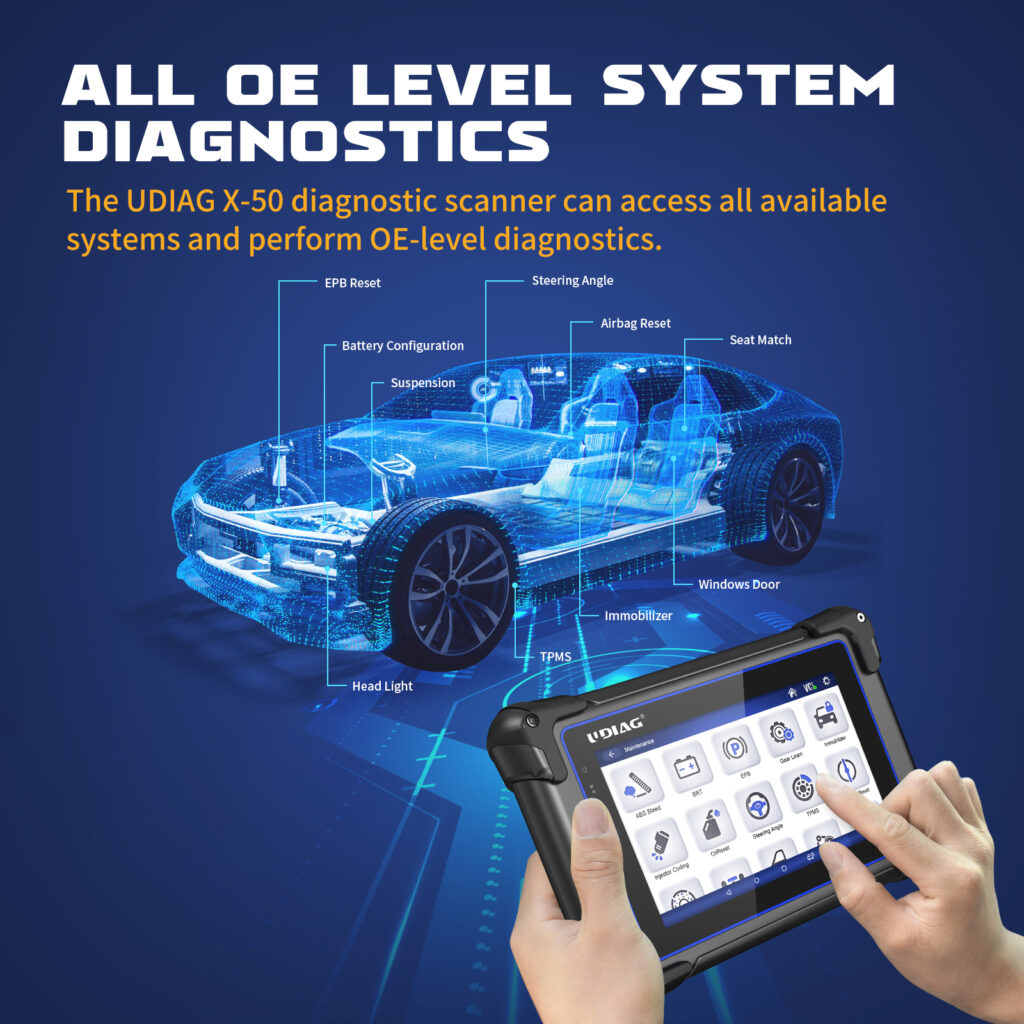What are the steps for troubleshooting car problems using an in-vehicle tablet?
2023-12-08 by UDIAG
In the fast-paced world of automotive technology, the use of in-vehicle tablets has become a game-changer for car owners and enthusiasts alike. These compact devices, equipped with powerful diagnostic capabilities, empower users to troubleshoot and resolve various car problems efficiently. Let’s delve into the step-by-step process of troubleshooting car issues using an in-vehicle tablet.

I. Introduction
In recent years, the automotive industry has witnessed a significant shift towards digital solutions, and in-vehicle tablets are at the forefront of this revolution. These tablets not only enhance the overall driving experience but also serve as invaluable tools for diagnosing and fixing car problems.
II. Benefits of In-Vehicle Tablets
Enhancing User Experience
In-vehicle tablets provide an intuitive interface, making the troubleshooting process accessible to users of all expertise levels. The user-friendly design ensures that even those with limited technical knowledge can navigate through diagnostic information effortlessly.
Providing Real-Time Diagnostics
One of the key advantages of using in-vehicle tablets is the ability to access real-time diagnostic data. Users can monitor the performance of various vehicle systems instantly, allowing for quick identification of potential issues before they escalate.
Access to a Vast Database of Troubleshooting Information
In-vehicle tablets are equipped with extensive databases containing information about common car problems and their solutions. This wealth of knowledge aids users in diagnosing issues accurately and implementing effective solutions.
III. Getting Started with In-Vehicle Tablets
Choosing the Right Tablet for Automotive Diagnostics
Selecting a suitable in-vehicle tablet is crucial for effective troubleshooting. Consider factors such as compatibility with your car’s make and model, software capabilities, and user reviews before making a purchase.
Installation and Setup Process
Once you have the right tablet, follow the installation and setup instructions provided by the manufacturer. This typically involves connecting the tablet to the car’s onboard diagnostics port (OBD-II) and configuring the necessary settings.
Conclusion
In conclusion, in-vehicle tablets have revolutionized the way car problems are diagnosed and resolved. The combination of real-time diagnostics, extensive databases, and user-friendly interfaces makes these devices indispensable for both seasoned mechanics and car owners with minimal technical knowledge. Embrace the power of technology to ensure a smoother and more reliable driving experience.
FAQs
1. Can I use any in-vehicle tablet for car troubleshooting, or are there specific models for certain vehicles?
The compatibility of in-vehicle tablets varies, so it’s essential to choose one that suits your car’s make and model.
2. Do I need technical expertise to use an in-vehicle tablet for troubleshooting?
While technical knowledge is beneficial, many tablets are designed to be user-friendly, enabling even those with limited expertise to perform basic troubleshooting.
3. Are there any risks involved in troubleshooting car problems with an in-vehicle tablet?
As long as users follow safety guidelines and procedures, the risks are minimal. Always prioritize safety during troubleshooting.
4. Can in-vehicle tablets help prevent car problems before they occur?
Yes, many tablets offer scheduled maintenance reminders and proactive monitoring, allowing users to address potential issues before they become critical.
5. How often should I perform diagnostic checks with my in-vehicle tablet?
Regular checks are advisable, especially before long journeys. The frequency may vary based on your driving habits and the tablet’s features.


